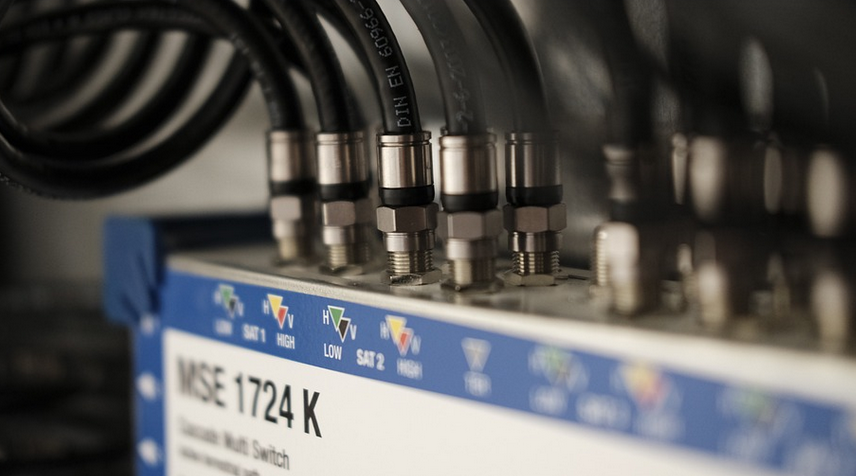What’s the Deal with Transmission Oil Cooler Hoses?
As any gearhead knows, keeping your car running smoothly is a big deal—especially when it comes to the transmission. After all, that smooth-shifting action and power delivery are built upon the foundation of a healthy transmission, which relies on precisely engineered fluids for lubrication and heat dissipation.
One crucial component in this process is the transmission oil cooler hose. Think of them as the invisible heroes of your engine’s operation, diligently working behind the scenes to keep that crucial transmission fluid from overheating. These hoses facilitate a vital role in keeping things cool—and when they fail, it can lead to serious problems down the line.
Why are Transmission Oil Cooler Hoses Important?
So, you might be wondering why these little rubber tubes deserve all the attention they get. Well, here’s the breakdown: transmission oil cooler hoses act as vital conduits for transferring heat from the transmission fluid to a dedicated cooler.
This process is critical because the transmission fluid, tasked with handling power and shifting gears smoothly, can get quite hot under duress. It needs to be kept at optimal temperatures to ensure smooth operation and prevent damage. These hoses help regulate this flow, preventing overheating that could lead to premature wear and tear on your transmission.
The Anatomy of a Transmission Oil Cooler Hose
Imagine these hoses as the delivery system for your engine’s magic potion—the transmission fluid. Each hose is designed in a specific way to ensure smooth, efficient delivery and prevent any unwanted leaks or damage.
**Here’s a peek at what makes these hoses tick:**
* **Material**: The most common material used for transmission oil cooler hoses is rubber. Rubber is flexible, durable and can withstand the high temperatures associated with modern vehicles, thanks to its excellent thermal resistance. * **Construction**: These hoses are often constructed with multiple layers of rubber to provide strength and flexibility. Some hoses even feature reinforcement cords within their construction for added durability. * **Temperature Resistance**: Look for hoses that can withstand the high temperatures associated with transmission operation—especially when you’re hauling heavy loads or going on long drives—to ensure proper heat dissipation.
Signs of Trouble: Recognizing Transmission Cooler Hose Problems
You might not always notice a problem right away, but if your vehicle starts to exhibit some concerning symptoms, it could be time for a closer look. Here’s what you need to watch out for:
* **Hoses are visibly damaged**: Look for cracks, holes or splits in the hose material. These signs of wear can indicate potential leaks that require immediate attention. * **Leaks:** A leak is a clear and present danger – it could result in transmission fluid loss and damage to the transmission and vehicle itself. * **Heat and performance issues:** If your car begins experiencing rough shifting, slipping gears or jerking in motion, a problem with the transmission oil cooler hose might be at play, requiring immediate attention from a mechanic.
Maintenance Matters: Keeping Your Hoses in Top Shape
Proactive maintenance is key to preventing any major issues down the line. Regular checks and preventative measures are your best defense against potential problems.
* **Check for Leaks Regularly**: Don’t hesitate to regularly inspect the hoses themselves, especially after a long drive or towing heavy loads. * **Fluid Checks**: Keep tabs on your transmission fluid level. If it is low, there might be internal issues, and even a small leak can cause problems. A mechanic may need to check for leaks, and you can get an assessment of the condition of the hoses during this process. * **Regular Service**: Take your vehicle in for regular maintenance service. This includes checking the transmission fluid level, looking for signs of leaks, and having the oil cooler hose checked by a trusted mechanic.
The Importance of Professional Care
While you can attempt basic checks yourself, getting professional help is always advisable for any complex task like installing or replacing your transmission oil cooler hoses. Mechanics have specialized tools and knowledge to diagnose and fix issues effectively and safely. A good mechanic will also offer advice on maintaining the system’s overall health.
Looking Ahead: The Future of Transmission Oil Cooler Hoses
As technology advances, so too do the materials used in transmission oil cooler hoses. The focus is increasingly on sustainability and efficiency. Look for hoses made with eco-friendly materials and designed to reduce heat loss. And even more advanced technologies will likely lead to even more robust and reliable systems that will continue to ensure smooth and worry-free gear shifting.



